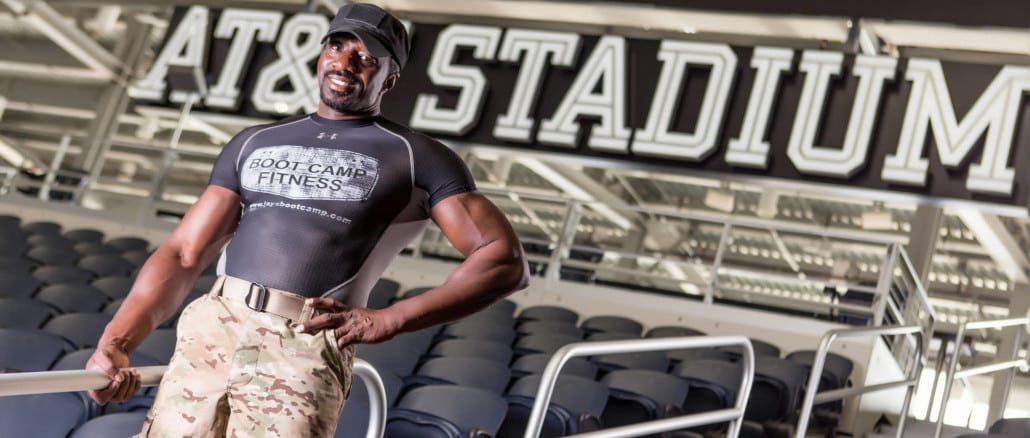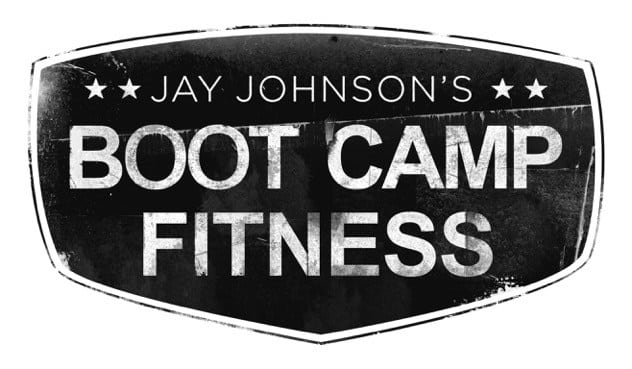

Fitness Tips
By Jay Johnson
Day 1 – Determine how much that you are actually moving. People typically OVERESTIMATE their actual physical activity by about 66%. Get a PEDOMETER and discover how many steps that you walk in a typical day. It is recommended that you get 10,000 per day. The average American is only getting 3,000 – 4,000. Your grandparents were getting 15,000 to 20,000. You were designed to move. If you are not getting 10,000, add 10% per day until you get to your goal. Remember that 10,000 is a minimum, more (unlike food) is better.
Day 2 – The biggest risk to exercise is not starting. Get started doing something. If it were fun or something that you really enjoyed, you would have probably started something before now. Just do it, it is good for you and you need to do it, JUST DO IT.
Day 3 – An extremely important part of your fitness program is being able to measure your progress. Keep track of your progress. (most fitness clubs have ready made forms for you.)
Day 4 – Exercising with a group can be fun and beneficial. Sometimes exercising with other people is such fun that you’re more likely to continue your fitness program. For safety reasons, some aerobic activities are best done with a group.
Day 5 – Regular physical activity – A pattern of physical activity is regular if activities are performed most days of the week, preferably daily; 5 or more days of the week if moderate-intensity activities are chosen; or 3 or more days of the week if vigorous-intensity activities are chosen.
Day 6 – If you are experiencing mild depression or anxiety, study’s show that aerobic workouts such as walking or jogging can significantly improve your mood. Give it a try, what do you have to lose, expect weight and depression.
Day 7 – Study’s show 92% of persons that have “long-term” success in a weight loss program, have incorporated a moderate exercise program into their daily lives. WALKING is the best activity that an individual can do to achieve a moderate level of activity. The human body was designed to walk.
Day 8 – Who ever said physical activity is all work and no play? In fact, it can be just the opposite! There is no need to think of strenuous workouts that are painful and boring. Instead, imagine doing fun physical activities you enjoy and look forward to. Do physical activity for enjoyment and watch the health benefits follow!
Day 9 – Insufficient physical activity is not limited to adults. More than a third of young people in grades 9–12 do not regularly engage in vigorous-intensity physical activity. Daily participation in high school physical education classes dropped from 42% in 1991 to 32% in 2001 (CDC, 2002).
Day 10 – Cardiorespiratory endurance is the ability of the body’s circulatory and respiratory systems to supply fuel during sustained physical activity (USDHHS, 1996 as adapted from Corbin & Lindsey, 1994). To improve your cardiorespiratory endurance, try activities that keep your heart rate elevated at a safe level for a sustained length of time such as walking, swimming, or bicycling. The activity you choose does not have to be strenuous to improve your cardiorespiratory endurance. Start slowly with an activity you enjoy, and gradually work up to a more intense pace.
Day 11 – Exercise is recommended a minimum of 3 days per week and a maximum of 7. Minimum levels will yield minimum results.
Day 12 – Walk with you kids. This is a great time to discuss their day and show them the you value exercise.
Day 13 – The average person either jogging or running one mile, burns approximately 100 calories. The average person needs to run 2.5 miles to burn off the 20 oz. soft drink.
Day 14 – The average person would need to jog 1.5 miles or walk approximately 3,000 steps to burn off 1 oz. of chips.
Day 15 – Studies show that “stretching” cold muscles does not prevent muscle soreness nor does it help to prevent injury. If you enjoy stretching, DO IT, but don’t allow that time to be counted in with the time that you are “exercising” for weight loss. Stretching does not burn many calories.
Day 16 – Studies show that the older you are, the more “moderate weight training” you should be incorporating into your fitness program. A 30 year old should spend 70% of their time of cardiovascular training and 30% on weight training. A 70 year old should be spending 60% of their time on weight training and 40% on cardiovascular training. Muscle strengthening and endurance can be improved at any age. The key word in “moderate”. Ask a professional for advice to get the most from your time.
Day 17 – An average person that weights 180 pounds, walking (fast) for 30 minutes would burn approximately 173 calories. A person that weights 220 pounds, walking (fast) for 30 minutes would burn approximately 211 calories. The question is, can a 220 pounds person, that is in the obese category of BMI, walk fast for 30 minutes?
Day 18 – Due to genetics, only 10% of women will build muscle. To avoid gaining bulk, concentrate on high repetitions, low weight and variety in your aerobic exercise routine.
Day 19 – The average person burns between 150 and 250 calories per hour in a gym, regardless of what the machine you are using indicates. The “machine calorie counters” are very inaccurate. Don’t depend on them for your calorie monitoring.
Day 20 – Remember….exercise is not excluded to sports activities at the Gym. A 3 mile walk every day, or working in the yard is exercise too.
Day 21 – Exercise does not eliminate the need for an annual checkup by your doctor. Stay healthy…see your doctor every year.
Day 22 – Exercise equipment may improve muscle tone, strength or endurance, but it can’t increase fat-burning in one particular area. To lose weight combine a low-fat diet with an exercise program that includes aerobic activity and strength training.
Day 23 – Fatigue and heavy breathing can be normal results of exercise, however pain, dizziness, nausea, headaches etc. are not. If you have any of these abnormal symptoms, see your doctor.
Day 24 – Ride the elevator up; take the stairs down—or take the stairs both ways.
Day 25 – In the latest study done with person’s that have “long-term” weight management success, 85% have incorporated a 6 days per week “moderate” exercise program into their lives. Walking is a great activity that meets most persons’ exercise goals
Day 26 – Fitness activities need to be age appropriate routines. A 30 year old, male or female, needs to be spending approximately 75% of their “fitness time” on cardiovascular training an 25% on weight training. A 75 year old, male or female, needs to be spending approximately 65% of their “fitness time” on weight training and 45% on cardiovascular.
Day 27 – Use your VCR to work out. If you don’t have time to go to the gym, work out at home. There are many workout video’s on the market…..Give it a try !
Day 28 – If you are able to, take the stairs instead of the elevator, it can add a lot of physical activity to your day.
Day 29 – First aid for sports injuries is R.I.C.E.–rest, ice, compression, elevation. It´s ice, not heat for the first 48 hours or as long as swelling is present. Even if you have an injury like a bad ankle sprain that requires medical attention, ice it right away, then go to the doctor .
Day 30 – For every hour you watch TV per day, you increase your chance of becoming Obese by 2%. So go do something else…Let me suggest something…..EXERCISE !
Day 31 – If you’re trying to increase your walking or running distance, Do not add more than 10% per week to prevent injury.
Day 32 – Keep track of your exercise progress ( ie: distance walked, weights lifted etc .), this is the only way to know that you are improving.
Day 33 – The purpose of exercise is to stay healthy, not to look like Arnold Schwartzenegger.
Day 34 – Riding your bicycle is an excellent form of exercise. Just make sure that you wear a helmet.
Day 35 – Have a home exercise plan, in case the weather is bad and you can’t walk outside.
Day 36 – It is scientifically proven that exercise reduces you chances of severe osteoporosis.
Day 37 – Approximately a 30 minute cardiovascular work would burn a average sports nutrition drink.
Day 38 – Replace your walking shoes every 6 months or 600 miles, whichever comes first. At that point, it doesn’t matter if the shoes still look great. They’ve lost a lot of their cushioning power. Be kind to your feet, and you’ll keep walking forever.
Day 39 – If you have excess fat in your abdomen, you won’t be able to see the muscles, no matter how many crunches you do. Abdominal exercises, such as sit-ups (crunches), are important for strengthening those muscles and improving posture. But muscle is muscle and fat is fat. If you have excess fat in your abdomen, there’s no such thing as spot reducing — losing weight in one specially designated area. To lose fat, you need to eat fewer calories than you burn.
Day 40 – A major reason high blood pressure is so common (1 in 4 American adults have it) is that people aren’t active enough. Physical activity can help prevent you from getting high blood pressure in the first place. If your blood pressure is already high, physical activity can significantly help control and treat it.
Day 41 – Walk instead of driving to the mailbox or your friend who lives one block away, you’ll get a lot more activity in that way.
Day 42 – Do you Travel a lot, most hotels have a gym. There is no reason why you should not work out if you’re out of town.




